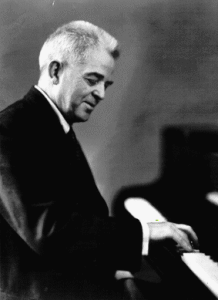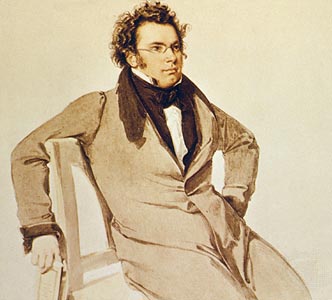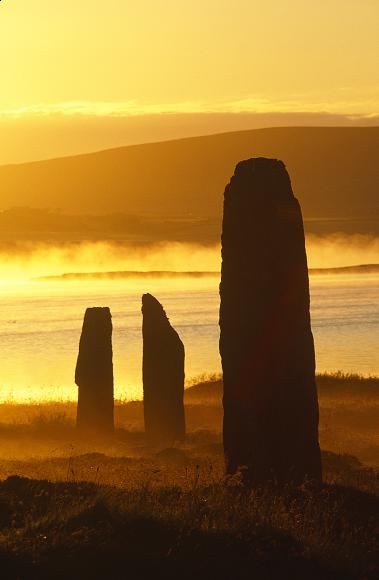A symphony, by nature, is always developing, unfolding, finding a way forward. It’s an indomitable process, sometimes filled with struggle, often, but not always, expressed through Sonata form. Just consider those famous opening four notes of Beethoven’s Fifth Symphony and the way they seem to take on a life of their own, evolving organically over the course of four movements to reach a triumphant and transcendent climax.

In 1914, as Europe descended into the apocalyptic horrors of the First World War, Danish composer Carl Nielsen began to think about the dynamic, inextinguishable power of the life force, the “elemental will to live,” and its relation to music. In a letter to his wife, Nielsen imagined a symphony “which has no programme but will express what we understand by the spirit of life or manifestations of life, that is: everything that moves, that wants to live … just life and motion, though varied – very varied – yet connected, and as if constantly on the move, in one big movement or stream.”
That work, completed in 1916, became Nielsen’s Symphony No. 4, “The Inextinguishable.” It’s set in four movements, but without looking at the score you’ll have a difficult time telling where one movement ends and the next begins. Opening with a sudden flash of raw energy, as if we’re tuning in to a drama already in progress, Nielsen’s Fourth is one long continuous musical development (Jean Sibelius’ symphonies follow a similar direction, most notably his Seventh Symphony). At the same time, it suggests the eternal. The final movement concludes with a triumphant theme marked Glorioso, which we first hear in a quiet, unassuming moment early in the first movement. At the end, we don’t feel as if we’ve reached an ultimate goal, just a notable mile marker in an infinite stream of development.
For some listeners, Nielsen’s Fourth can be heard as a “war symphony.” In the final movement, a ferocious battle takes place between two sets of tympani on both sides of the orchestra (Nielsen’s score calls for the second tympani to be positioned near the audience at the edge of the stage). But these moments go beyond programmatic references to bombs exploding, as Nielsen’s own description of the work and philosophy of music suggest:
Music is Life. As soon as even a single note sounds in the air or through space, it is the result of life and movement; that is why music (and the dance) are the more immediate expressions of the will to life.
The symphony evokes the most primal sources of life and the wellspring of the life-feeling; that is, what lies behind all human, animal and plant life, as we perceive or live it. It is not a musical, programme-like account of the development of a life within a limited stretch of time and space, but an un-programme-like dip right down to the layers of the emotional life that are still half-chaotic and wholly elementary. In other words the opposite of all programme music, despite the fact that this sounds like a programme.
The symphony is not something with a thought-content, except insofar as the structuring of the various sections and the ordering of the musical material are the fruit of deliberation by the composer in the same way as when an engineer sets up dykes and sluices for the water during a flood. It is in a way a completely thoughtless expression of what make the birds cry, the animals roar, bleat, run and fight, and humans moan, groan exult and shout without any explanation. The symphony does not describe all this, but the basic emotion that lies beneath all this. Music can do just this, it is its most profound quality, its true domain … because, by simply being itself, it has performed its task. For it is life, whereas the other arts only represent and paraphrase life. Life is indomitable and inextinguishable; the struggle, the wrestling, the generation and the wasting away go on today as yesterday, tomorrow as today, and everything returns. Once more: music is life, and like it inextinguishable.
As you listen to Nielsen’s Fourth Symphony, enjoy the moment and allow yourself to get lost in the sound. At times you may be reminded of the brooding Scandinavian chill of Sibelius…the mysterious play of light on a snow-covered landscape. For example, listen to this passage from the first movement. Amid a gradually building collage of sound, a wandering string line and colorful woodwind interjections are layered on a static bass.
There are moments of rude interruption which disrupt the status quo: the strange, sudden snarl of the violas, or this passage where the flute and bassoon awaken as the strings fade out. The second movement begins as an elegant seemingly predictable dance, which suddenly turns in unusual harmonic directions. In this extraordinary passage in the third movement, the interruption comes in the form of a chant-like motive which breaks out in the woodwinds, eventually building into a climax in the brass. These are the moments which push the Symphony’s relentless development forward and thrust us into new musical landscapes. Change and development occur through disruption.
And now, let’s listen to the entire piece. Here is Herbert Blomstedt’s 1999 recording with the San Francisco Symphony:
https://www.youtube.com/watch?v=WkEBPND8N94
[unordered_list style=”tick”]
- Find this recording at iTunes, Amazon.
- Hear a live performance with Simon Rattle and the Royal Danish Orchestra.
- Hear Neeme Järvi’s 1993 recording with the Gothenburg Symphony Orchestra.
[/unordered_list]




 Natural cycles, from the change of seasons to the predictable routine of day turning to night, shape our sense of time. Can you imagine how our perception of time, and subsequently music, would be different without these events?
Natural cycles, from the change of seasons to the predictable routine of day turning to night, shape our sense of time. Can you imagine how our perception of time, and subsequently music, would be different without these events?